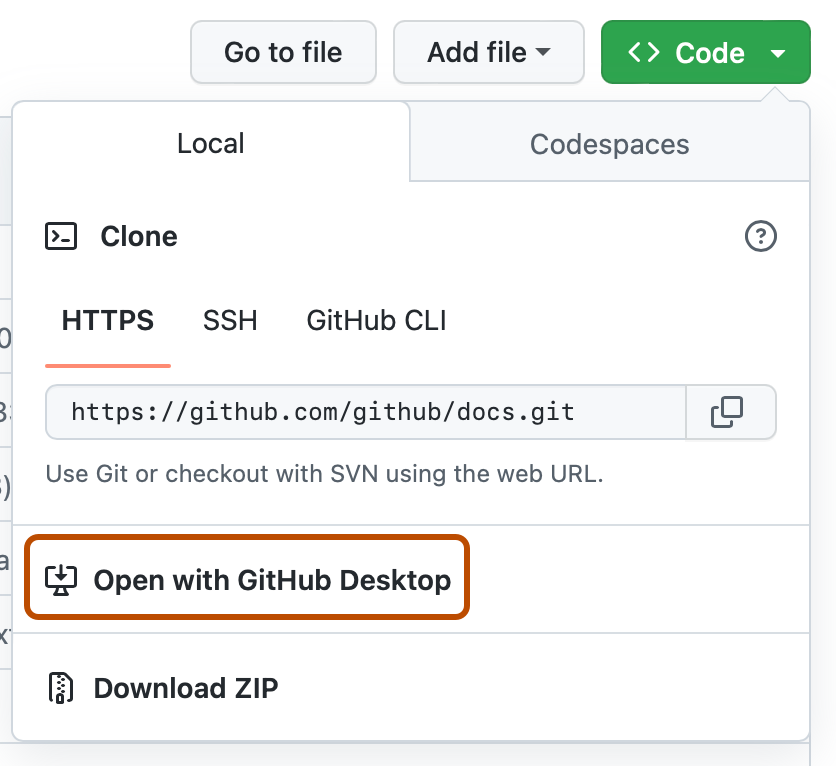

- Github clone repository to desktop how to#
- Github clone repository to desktop install#
- Github clone repository to desktop code#
If authenticating with an existing repository doesn't work automatically, you may need to manually provide a personal access token. When you do something that requires GitHub authentication, you'll see a prompt to sign in:įollow the steps to sign into GitHub and return to VS Code.
Github clone repository to desktop code#
You don't need to have any special extensions installed for authentication it is built into VS Code so that you can efficiently manage your repository. You can search for and clone a repository from GitHub using the Git: Clone command in the Command Palette ( ⇧⌘P (Windows, Linux Ctrl+Shift+P)) or by using the Clone Repository button in the Source Control view (available when you have no folder open).įrom the GitHub repository dropdown you can filter and pick the repository you want to clone locally.Īuthenticating with an existing repositoryĮnabling authentication through GitHub happens when you run any Git action in VS Code that requires GitHub authentication, such as pushing to a repository that you're a member of or cloning a private repository.

Setting up a repository Cloning a repository in the Status bar, paste the token, and hit Enter. Copy the token, and switch back to VS Code. In the browser window, you will receive your authorization token. If you are not redirected to VS Code, you can add your authorization token manually. Follow the prompts to authenticate with GitHub in the browser and return to VS Code. Once you've installed the GitHub Pull Requests and Issues extension, you'll need to sign in. Getting started with GitHub Pull Requests and Issues If you're new to source control or want to learn more about VS Code's basic Git support, you can start with the Source Control topic. In this topic, we'll demonstrate how you can use some of your favorite parts of GitHub without leaving VS Code.
Github clone repository to desktop install#
To get started with the GitHub in VS Code, you'll need to install Git, create a GitHub account and install the GitHub Pull Requests and Issues extension. Install the GitHub Pull Requests and Issues extension There are many ways to interact with GitHub, for example, via their website at or the Git command-line interface (CLI), but in VS Code, the rich GitHub integration is provided by the GitHub Pull Requests and Issues extension. Using GitHub with Visual Studio Code lets you share your source code and collaborate with others right within your editor. GitHub is a cloud-based service for storing and sharing source code.

Github clone repository to desktop how to#
Please look at the technical overview of the Git for Windows packaging and how to include your changes in your own custom installer. The Git for Windows SDK is a build environment that includes all the tools necessary for developers who want to contribute by writing code for Git for Windows. Issue Tracker Git for Windows SDK : Contributing Code If you've noticed a bug or simply have an idea that you'd like to see become real, why not work on it? Bug reports and feature requests are typically submitted to the issue tracker on our GitHub repository. There the roles of those involved in driving this project further down the road are described in detail. If you are interested in contributing to the Git for Windows project, have a look at the current governance model. As an open source project, Git for Windows benefits greatly from both the volunteer work of helpful developers and good bug reports made by Git for Windows' users.


 0 kommentar(er)
0 kommentar(er)
